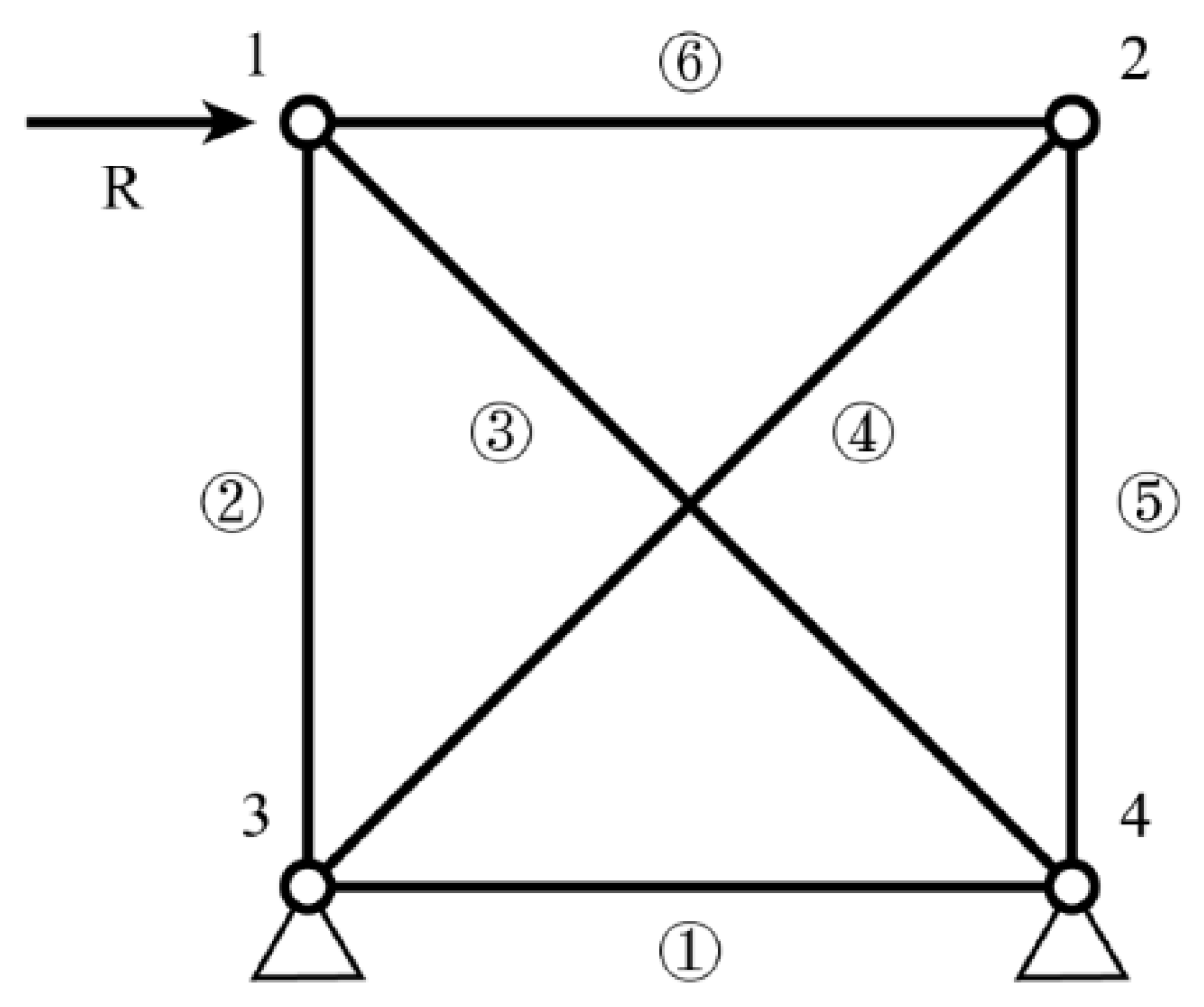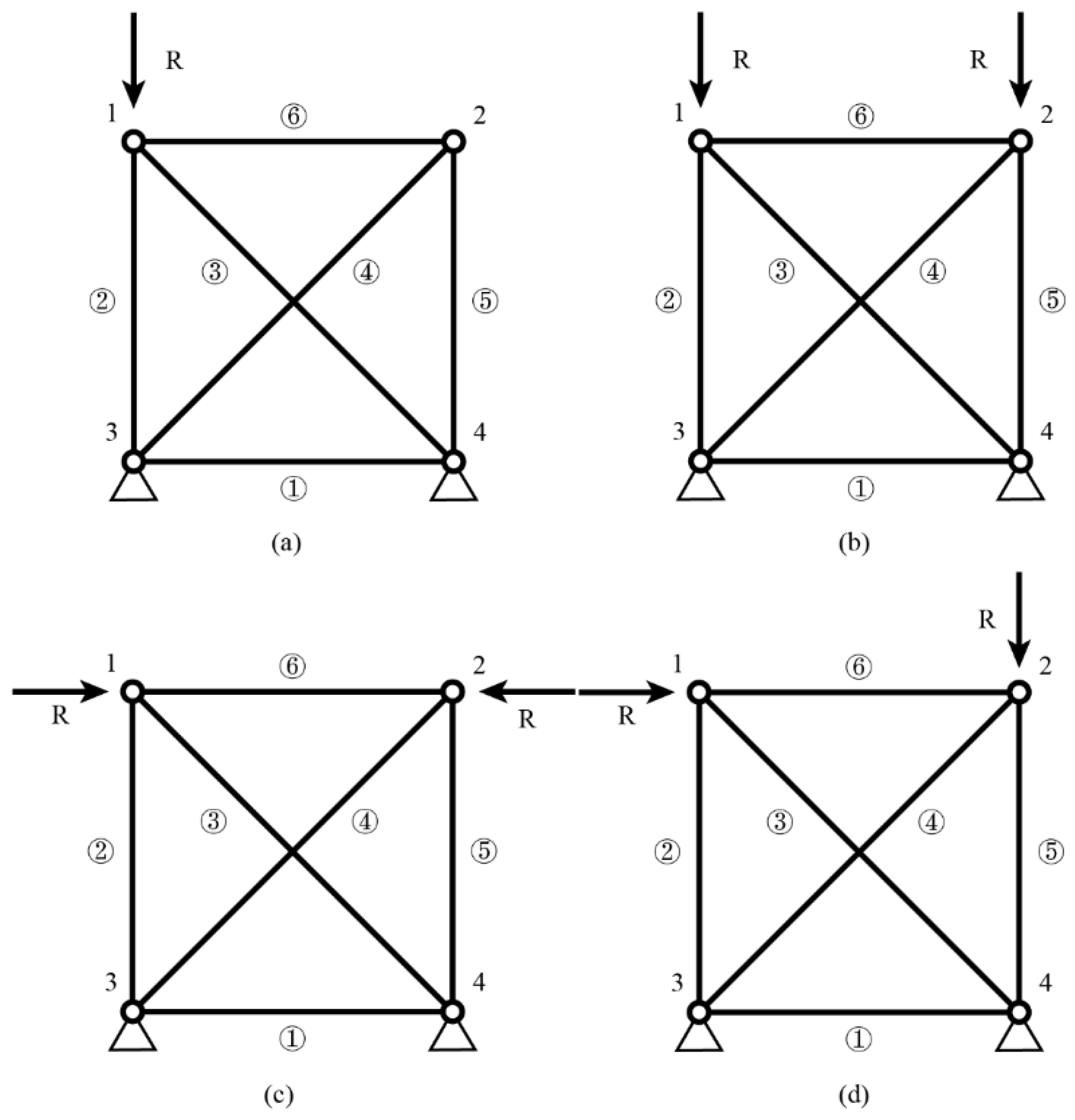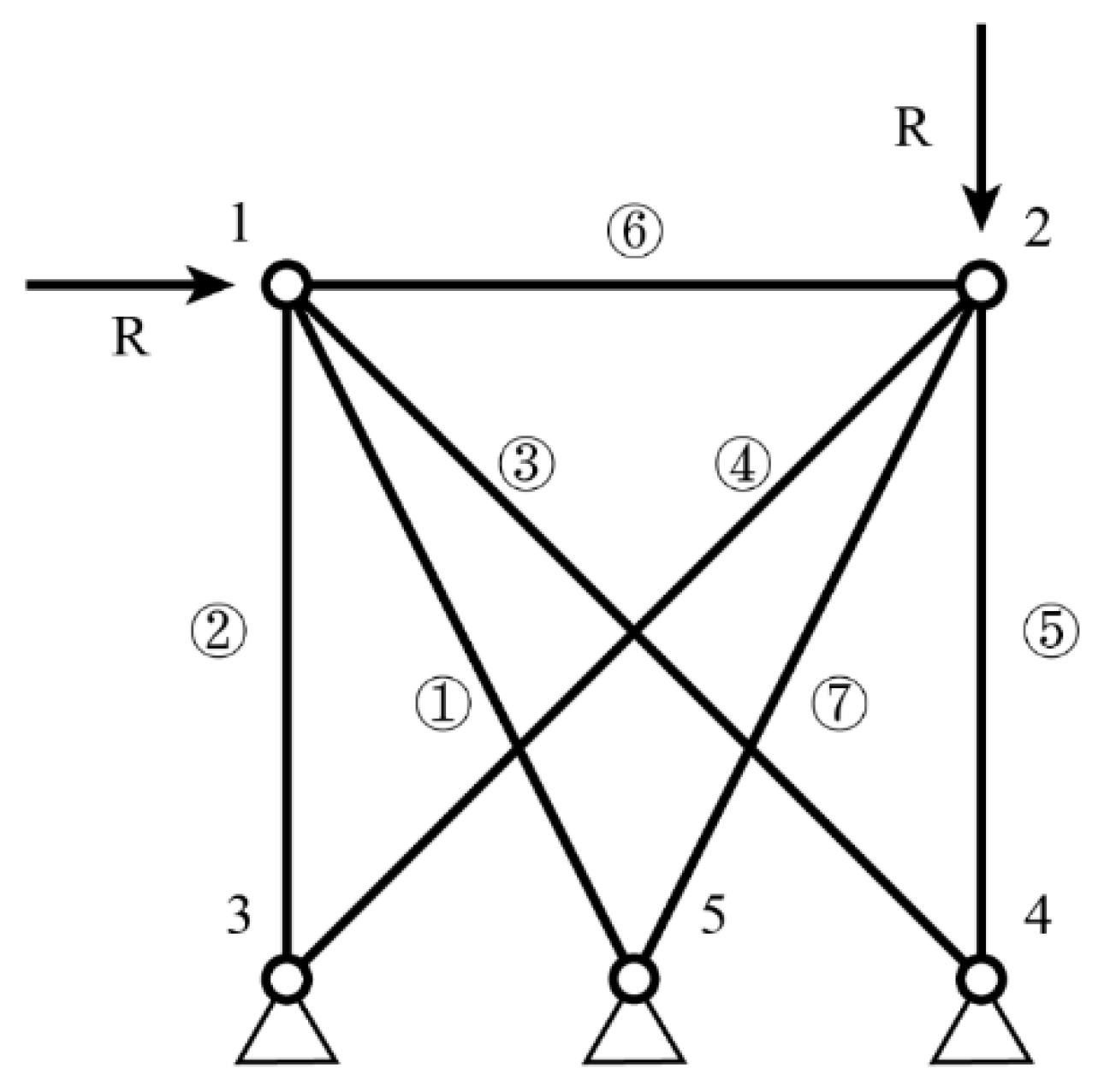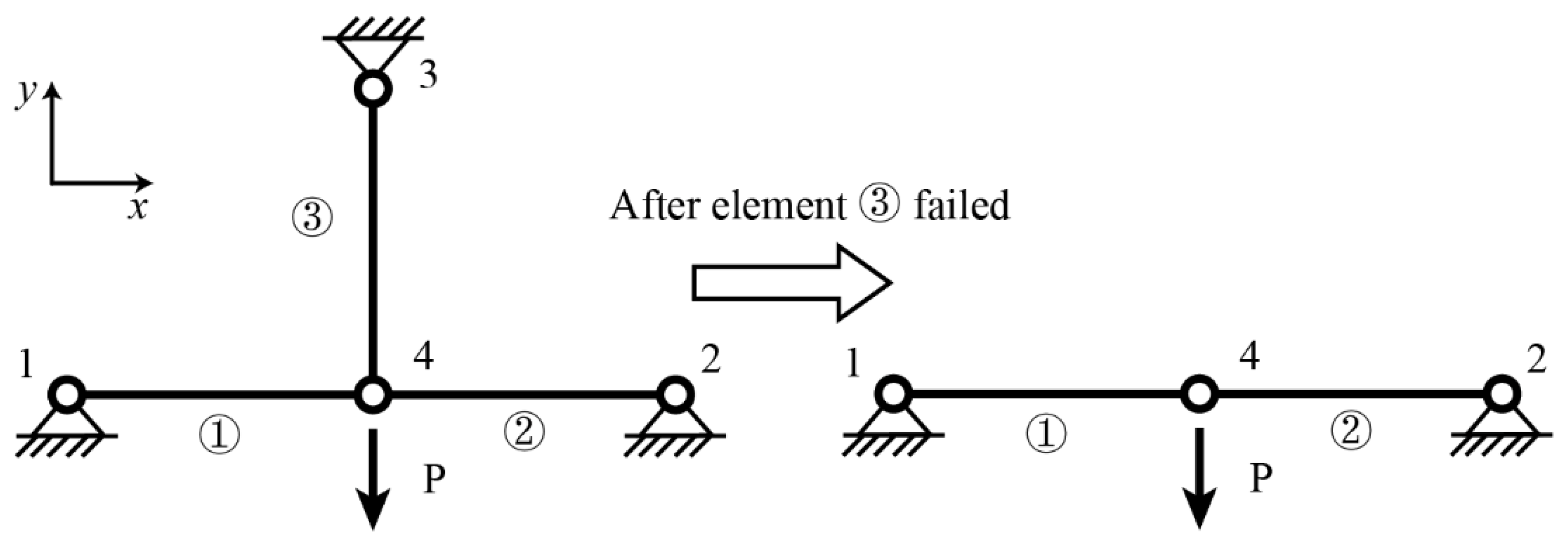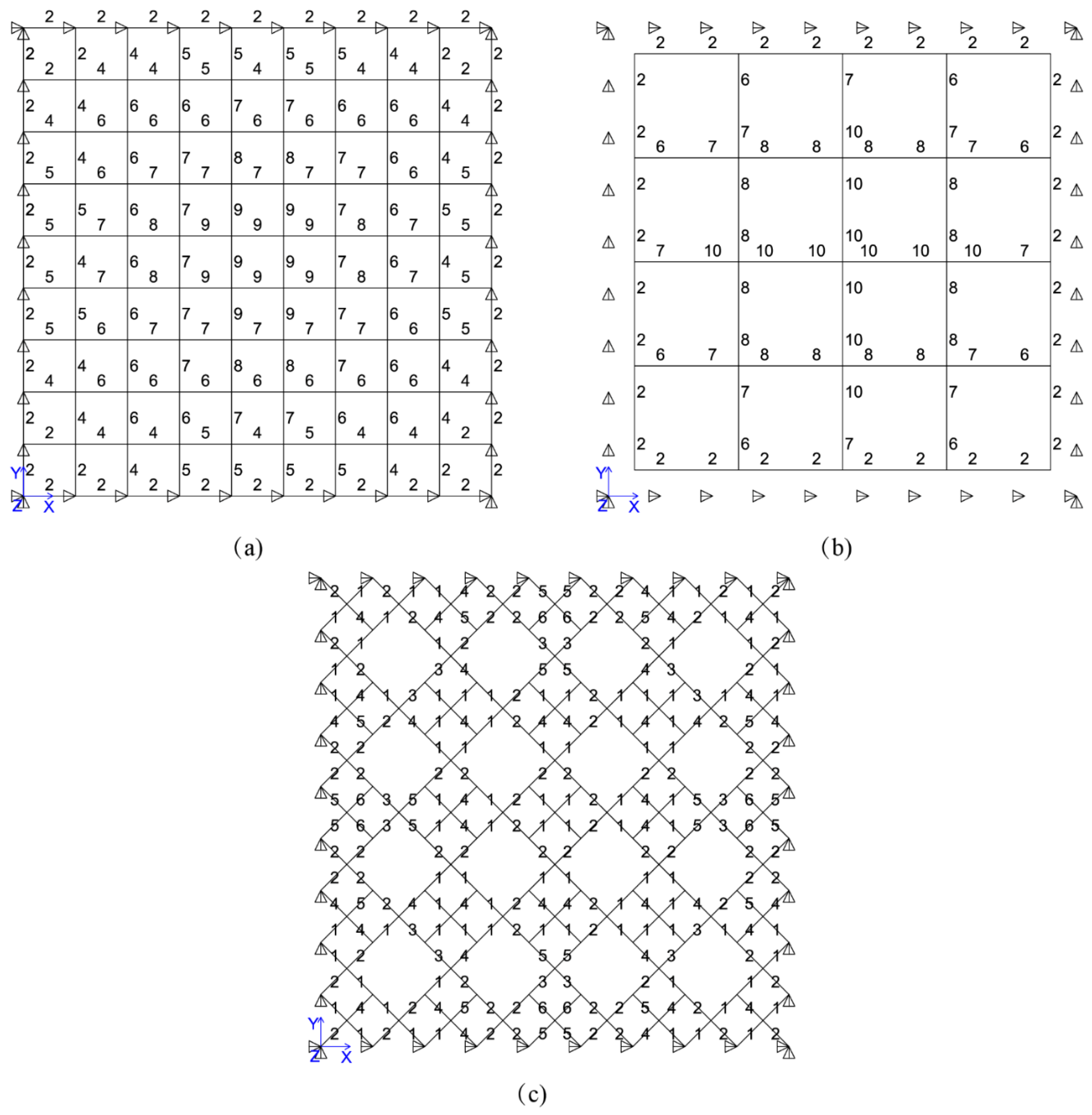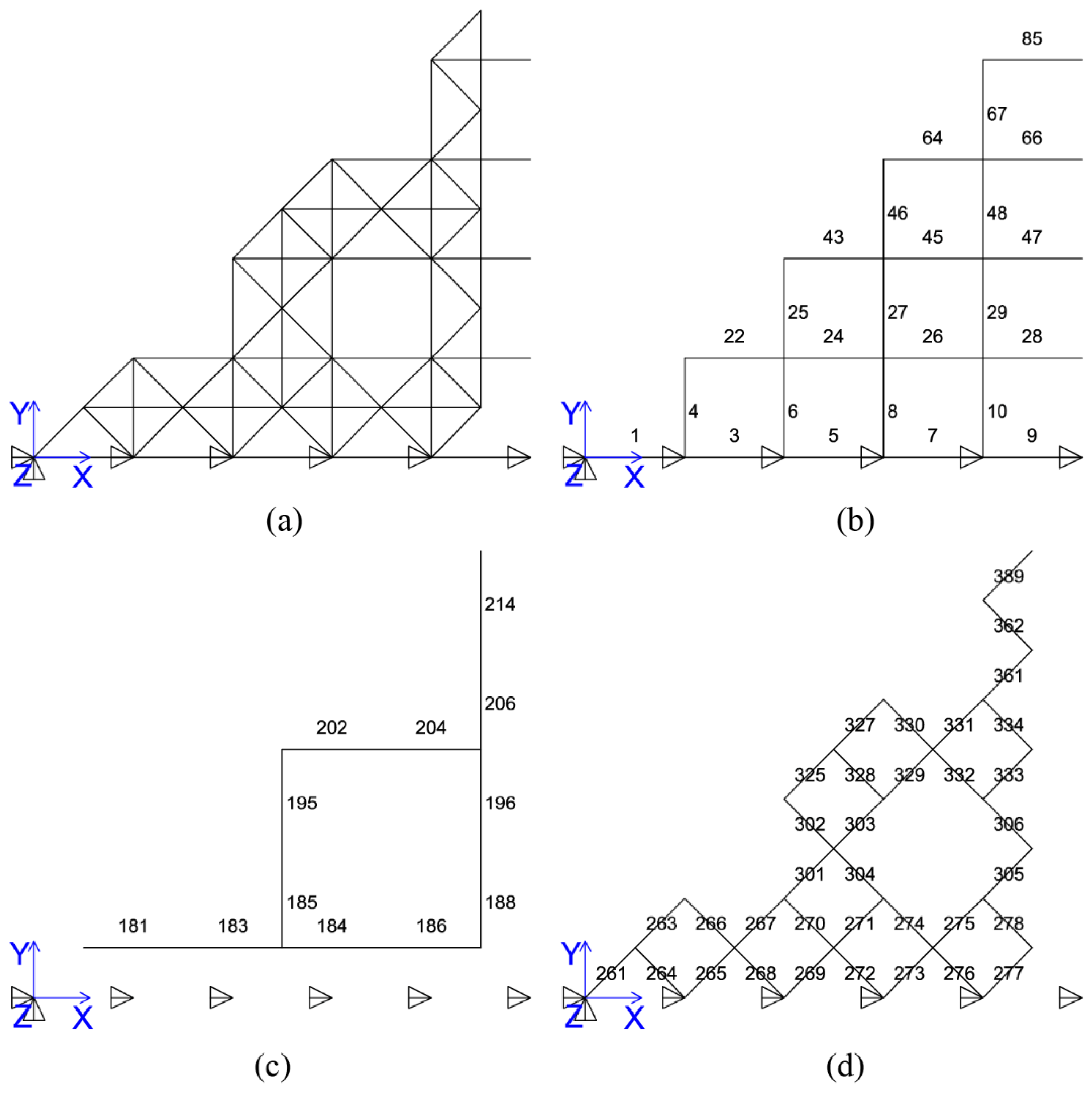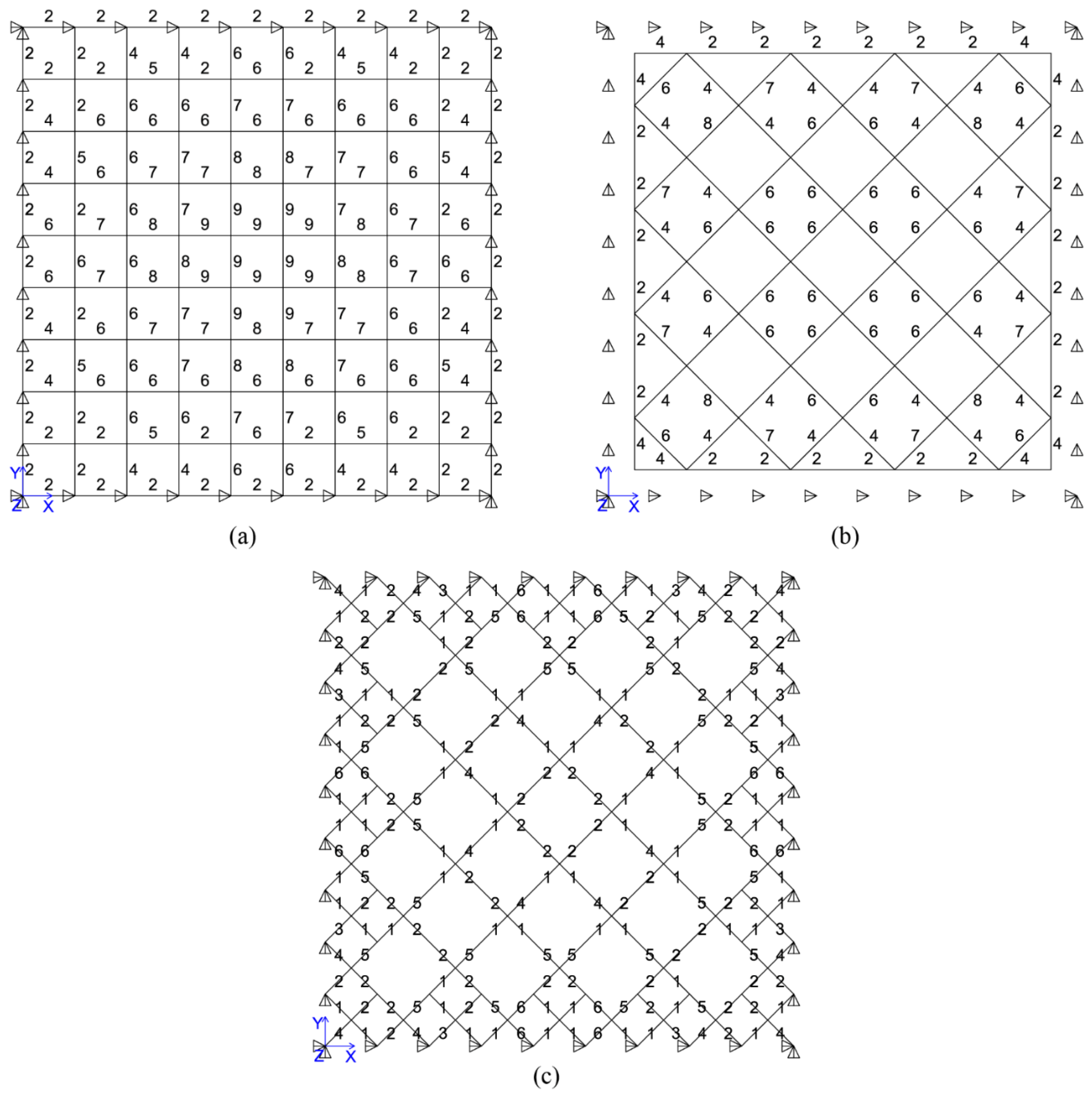In this section, three planar truss structures are chosen to study the importance of elements. The software ANSYS is chosen to create models with the Link 8 element assigned with Young’s modulus E of all bars as 2.1 × 105 MPa.
4.1.1. Planar Truss 1
A two-dimensional truss 1 is shown in
Figure 1. The height and span of the truss are both 3 m. The area of the truss section is 904 mm
2 with a cross-section of
Φ 76 × 4. The horizontal load applied on node 1 is 10 kN. The hinge support is used to constraint nodes 3 and 4 in the structure.
The analysis results about the element importance coefficients are given in
Table 1. It can be seen that the importance coefficient of element 1 is 0, because two nodes of the element are fully restrained. Thus, these nodes have no displacement. This element does not affect the truss structure, whether it is lost or not.
The order of the importance of the elements is 2, 3→4, 5, 6→1 (the direction of the arrow indicates a decrease in the importance coefficient). The importance coefficients of elements 2 and 3 are nearly equal. From
Figure 1, it can be found that a simple structure is formed by elements 2 and 3 with nodes 3 and 4. This simplified structure can support the horizontal load. Therefore, elements 2 and 3 are the most important under the load mode.
To study the effect of different load distributions on the element importance coefficient, four types of load distribution, as shown in
Figure 2, are considered on the planar truss 1. It can be seen that the structural responses are not the same under different load distributions in
Table 2. Under the load distribution in
Figure 2a, the element importance order is 2→3, 4, 5, 6→1. Element 2 is the direct load-bearing element under this load, so it is the most important element. For load distribution in
Figure 2b, the order of the element importance is 2, 5→3, 4, 6→1. Elements 2 and 5 are the main load-bearing elements, and their importance coefficients are the same, which conforms to the structural symmetry. When the structure is loaded, as shown in
Figure 2c, the order of the element importance is 6→2, 5, 3, 4→1. Removing element 6 will increase the displacement of remain structure under the horizontal loads and increase element strain energy. Thus, the importance coefficient of element 6 is higher than the others. Under load distribution in
Figure 2d, the order of the element importance is 5→2, 3→4, 6→1. Element 5 is the direct load-bearing element, having the highest importance coefficient. Elements 2 and 3 transfer the load of the vertical loads, which are less important.
To modify the support constraints of plane truss 1, the horizontal restriction of node 4 is removed, as shown in
Figure 3b. Comparing
Table 3 with
Table 1, it can be seen that, when the support condition is changed, the importance coefficient of element 1 changes from 0 to 0.4999. Releasing the horizontal constraint of node 4 allows element 1 to deform under the horizontal load, and now element 1 affects the bearing load of the structure. In
Figure 3b, the order of the element importance is 2, 3→4, 5, 6, 1, and each importance coefficient of elements is close. Under the condition of support II, the structure has a redundant degree of freedom, and the remaining structure will become statically determinate after removing any elements. Hence, the importance of each element is similar.
The sectional areas of elements 2–6 in
Figure 1 are changed in turn to
n times (
Ai′ =
nAi). The results about the element importance coefficient analysis are shown in
Table 4. When the section of element 5 is changed, the order of the importance of the elements is 5→2, 3→4, 6→1. The importance coefficients of elements 2 and 3 are slightly different from elements 4 and 5. We can also see that the importance of element 5 increased with the area. The importance of elements 4 and 6 are also increasing, and their importance coefficients change from 0.1912 to 0.4953. Element 5 is the direct bearing loads element of the vertical loads. By increasing its sectional area, it makes elements 4 and 6 play a more important role.
Comparing the importance coefficient of each element after increasing the sectional area of element 2, we can see that there is no change in the order of the importance of the element. However, the importance coefficient of elements 2 and 3 increases from 0.501 to 0.566, and the importance coefficient of elements 5, 4 and 6 are lower than before. Similarly, in order to compare these importance coefficients after increasing the sectional area of element 3, we can see that the order of the importance of elements is not changed. The importance coefficient of elements 2 and 3 is equal to element 5. Strengthening elements 2 and 3 can improve their importance effectively and decrease the importance of elements 5, 4 and 6.
When comparing the importance coefficient of each element after increasing the sectional area of elements 4 and 6, it can be seen that there is no change in the order of the importance of the element. The importance coefficients of elements 4 and 6 have increased, and the importance coefficients of elements 5, 2 and 3 have decreased. When the sectional area of element 4 has increased, the changes of these coefficients are notable. The sectional area of element 4 is large, thus giving a high stiffness to resist large deformation. Moreover, one side of this element is linked with the fixed node, which makes node 2 no displacement. Thus, it dramatically affects the importance coefficient of whether or not to increase the sectional area of element 4. Element 6 has no constraint, such that it has little effect on the structure.
Similarly, the sectional area of element 2 is changed to
n times (
Ai′
= nAi) in
Figure 2b. According to the results in
Table 5, it can be found that the order of importance of the element is 2, 5→3, 4, 6→1. Along with the increase of the section of element 2, the importance of elements 2 and 5 increased, and the elements 3, 4 and 6 decreased. It should be noted that, even if the section area of element 2 is increased, it is not possible to make its importance higher than element 5 under symmetry vertical loads. When element 2 is damaged, element 5 bears no stress, resulting in the strain energy of the remaining structure being comprised only of elements 3, 4 and 6. The failure of element 5 is similar to element 2. After the failure of elements 2 and 5, the strain energy of the remaining elements is equal under the same load effect, and hence the importance of elements 2, 5 are equal. We can conclude that the structural robustness will not be improved by merely increasing the stiffness of element 2.
